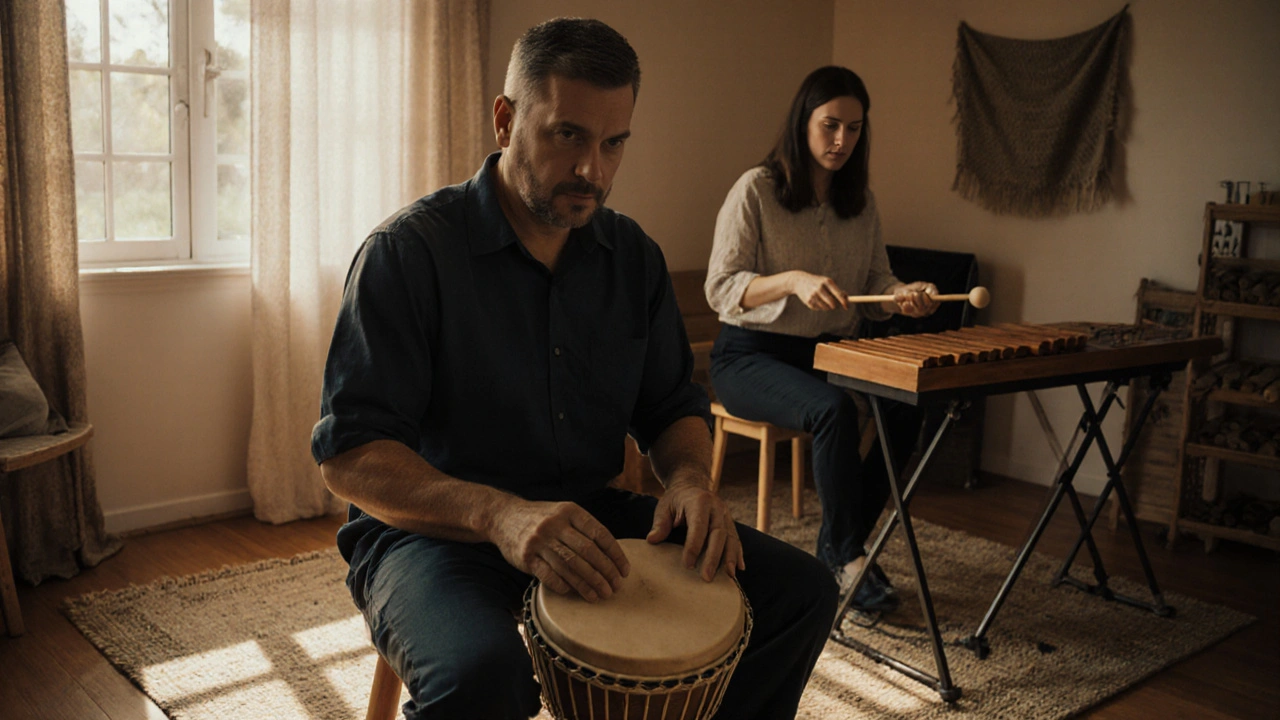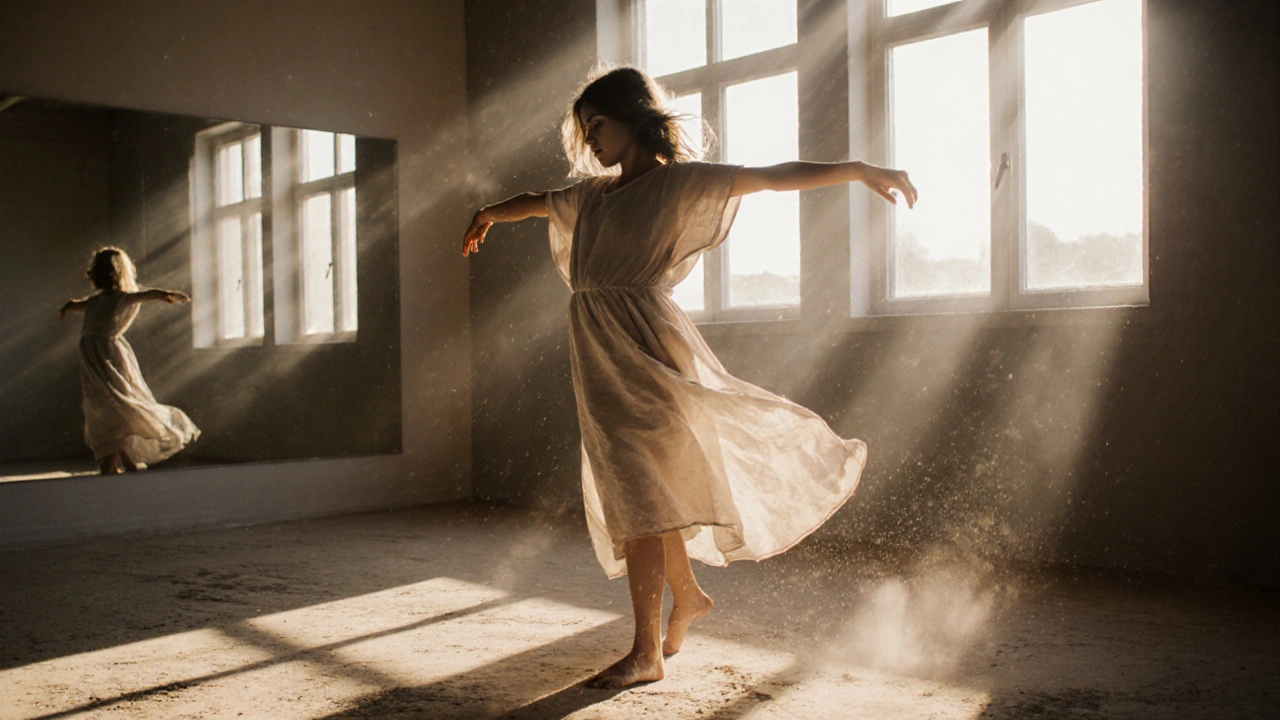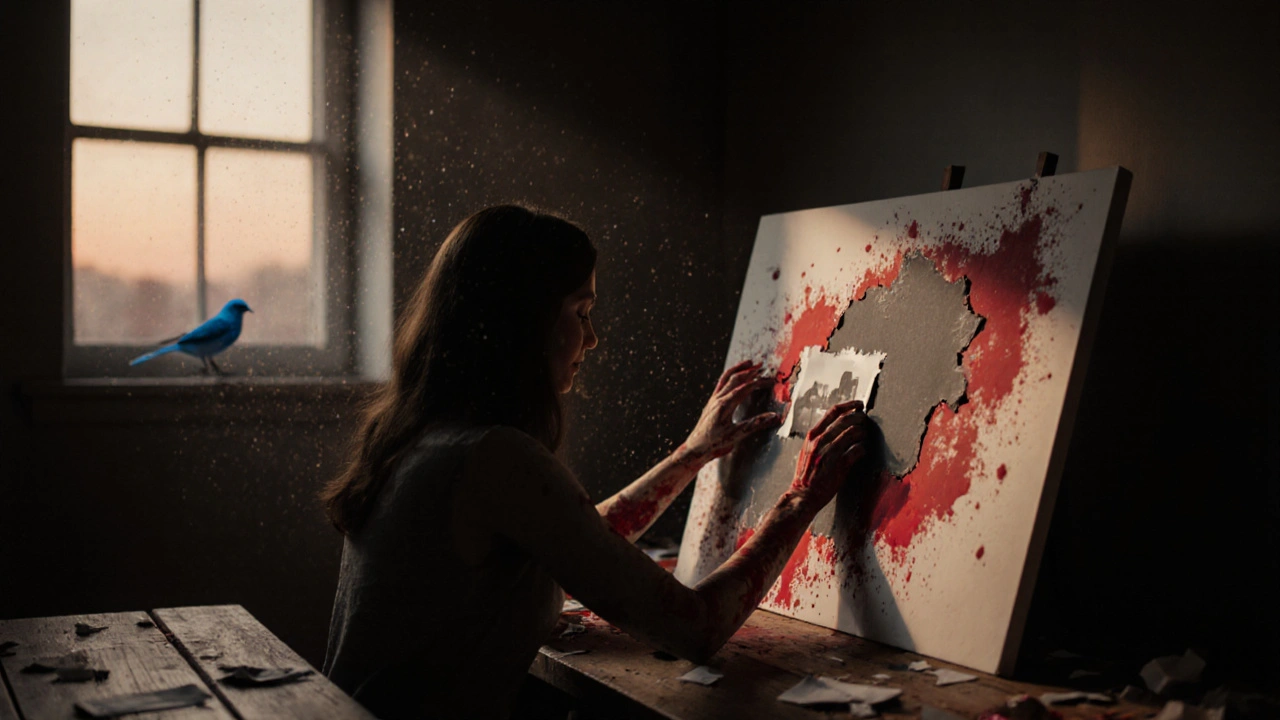When you’re carrying heavy emotions-grief, trauma, anxiety, or just the quiet weight of being human-talking about it doesn’t always help. Words can feel too sharp, too limited. That’s where creative arts therapies step in. Not as a replacement for therapy, but as a different kind of language. One that doesn’t ask you to explain. It asks you to make.
What Exactly Are Creative Arts Therapies?
Creative arts therapies use art, music, dance, drama, and writing to help people process emotions they can’t yet put into words. These aren’t art classes or performance rehearsals. They’re clinical, evidence-backed approaches led by trained therapists who understand how creativity connects to the nervous system.
Art therapy, for example, isn’t about drawing perfectly. It’s about what happens when you smear paint across paper after a panic attack. Or when you sculpt a figure that feels like your anger, then watch it dry under the light. Music therapy isn’t about playing Beethoven. It’s about drumming out your grief, or humming a tune that matches your sadness until it starts to shift.
These therapies work because they bypass the part of the brain that overthinks. The prefrontal cortex-your logical, verbal center-gets quiet. And the limbic system, where emotions live, gets to speak through color, rhythm, movement, or metaphor. Studies from the American Art Therapy Association show that 78% of participants in structured art therapy programs reported reduced symptoms of PTSD after 12 weeks. Similar results show up in music therapy for depression, with clinical trials from the Journal of Music Therapy noting a 40% drop in depressive scores after 8 weekly sessions.
Why Words Fall Short
Think about the last time you were really upset. Did you sit down and say, “I feel a deep sense of existential sorrow compounded by unresolved childhood attachment wounds”? No. You probably clenched your jaw, stared at the wall, or cried without knowing why.
Trauma and deep emotional pain don’t live in neat sentences. They live in the body. In tight shoulders. In sleepless nights. In the way you flinch at a certain sound. Words can’t always reach that. But a brushstroke can. A drumbeat can. A dance step can.
Neuroscience backs this up. fMRI scans show that when people engage in creative expression-like painting or improvising music-there’s increased activity in the default mode network. That’s the brain system tied to self-reflection and emotional processing. At the same time, the amygdala-the fear center-calms down. You’re not just feeling better. Your brain is rewiring itself.
Art Therapy: Letting Colors Speak
In art therapy, you might be asked to draw your emotion. Not your problem. Not your story. Just the feeling. Maybe it’s a jagged red shape. Or a heavy gray blob. Maybe it’s nothing at all-just blank paper, and that’s okay too.
One woman I worked with, after losing her son to cancer, couldn’t speak for months. She came to art therapy and spent three sessions just tearing up old photos and gluing the pieces onto a canvas. No words. Just fragments. On the fourth session, she added a single blue bird in the corner. She didn’t say anything. But she cried. And that was the first time she cried since the funeral.
Art therapists don’t interpret your art. They ask questions like: “What do you notice when you look at this?” or “Where does this color sit in your body?” The meaning comes from you. The healing comes from the act of making it visible.
Music Therapy: Rhythm as Rescue
Music therapy doesn’t require you to know how to play an instrument. It just asks you to listen-and respond.
For someone with anxiety, a therapist might play slow, steady drumbeats while guiding them to match their breathing. The rhythm becomes an anchor. For someone with autism or PTSD, improvising on a xylophone can help them express what they’ve been holding inside. A 2024 meta-analysis in Frontiers in Psychology found that music therapy significantly improved emotional regulation in adults with complex trauma, with effects lasting up to six months after treatment ended.
One man, a veteran with severe PTSD, couldn’t tolerate loud noises. He avoided crowds. He barely spoke. His music therapist gave him a small hand drum. At first, he tapped it once every few minutes. Slowly, he started tapping more. Then he began to play patterns. After eight weeks, he played a full song-his own. He said it was the first time he felt like he was still alive, not just surviving.

Dance/Movement Therapy: The Body Remembers
When trauma happens, the body freezes. It holds onto the memory in muscle tension, shallow breathing, or chronic pain. Dance/movement therapy helps release that.
You don’t need to be a dancer. You just need to move-however you can. Maybe you sway. Maybe you shake. Maybe you crawl across the floor. The therapist mirrors your movement, then gently invites you to expand it. This builds body awareness and safety.
Research from the American Dance Therapy Association shows that dance/movement therapy reduces cortisol levels by an average of 32% after six sessions. For people with eating disorders, it helps rebuild a positive relationship with their body. For survivors of abuse, it helps reclaim control over their physical space.
One teenager recovering from sexual assault spent her first session curled in a ball. By session five, she was standing tall, arms outstretched, spinning slowly. She said, “I didn’t know I could feel space around me again.”
Expressive Writing: Putting the Unsayable on Paper
Writing isn’t always about grammar or structure. In expressive writing therapy, you write without stopping. No editing. No judgment. Just let it spill.
James Pennebaker’s groundbreaking research in the 1990s showed that people who wrote about traumatic experiences for 15 minutes a day, four days in a row, had fewer doctor visits and stronger immune responses six months later. The act of translating pain into words-even messy ones-helps the brain organize the memory and reduce its emotional charge.
Today, expressive writing is used in hospitals, prisons, and refugee centers. One woman, who survived domestic violence, wrote 12 pages in one sitting: “I didn’t know I was still angry until I saw the ink bleeding through the paper.” She didn’t show it to anyone. But she burned it. And she felt lighter.
Who Can Benefit?
These therapies aren’t just for people with diagnosed conditions. They’re for anyone carrying invisible weight.
- Parents grieving a lost child
- Teenagers struggling with identity
- Healthcare workers burned out from years of trauma
- Immigrants missing home and language
- People recovering from addiction
- Anyone who feels stuck, numb, or too tired to talk
You don’t need to be “artistic.” You don’t need talent. You just need to be willing to try something that doesn’t make sense at first. Because healing doesn’t always come through logic. Sometimes, it comes through color, sound, motion, or the scratch of a pen.

How to Get Started
If you’re curious, here’s how to begin:
- Find a licensed creative arts therapist. Look for credentials like ATR (Art Therapist, Registered), MT-BC (Music Therapist, Board-Certified), or ADTA (American Dance Therapy Association).
- Start small. Try a 30-minute session. No commitment needed.
- Don’t expect magic. Healing isn’t linear. Some days you’ll feel nothing. Other days, you’ll cry for no reason. That’s part of it.
- If you can’t access a therapist, try self-guided practices: paint with your non-dominant hand, hum a tune that matches your mood, write a letter you’ll never send.
There are no rules. No right way. Just your body, your feelings, and the tools to let them out.
What This Isn’t
These therapies aren’t a quick fix. They’re not a replacement for medication or talk therapy when you need it. They’re not about becoming an artist. They’re about becoming more whole.
You won’t walk out of a session and suddenly feel “fixed.” But you might walk out feeling less alone. Less broken. Less like you have to carry everything inside.
That’s the quiet power of creative arts therapies. They don’t fix you. They remind you that you’re still here. And that’s enough to begin again.
Do I need to be artistic to benefit from creative arts therapies?
No. Creative arts therapies aren’t about skill or talent. They’re about expression. You don’t need to draw well, play music perfectly, or dance gracefully. The goal isn’t to create a masterpiece-it’s to let your inner experience find a way out. A scribble, a hum, a shaky step-they all count.
Can these therapies help with trauma?
Yes. Trauma often gets stuck in the body and can’t be reached by words alone. Creative arts therapies provide a safe, non-verbal way to process traumatic memories. Studies show they reduce symptoms of PTSD, lower stress hormones, and help rebuild a sense of safety. Many trauma survivors report feeling more in control of their emotions after just a few sessions.
How long does it take to see results?
There’s no set timeline. Some people feel a shift after one session. Others need weeks or months. Healing isn’t a race. What matters is consistency. Even 20 minutes a week of expressive painting, drumming, or writing can slowly change how your brain handles stress. The changes are often subtle at first-better sleep, less tension, a moment of calm you didn’t expect.
Are these therapies covered by insurance?
In Australia, some private health insurers cover creative arts therapies under extras policies, especially if delivered by a registered professional. Medicare doesn’t currently cover them directly, but you may be eligible through a Mental Health Treatment Plan if referred by a GP. Check with your provider or a licensed therapist-they can help you navigate options.
Can I do this on my own without a therapist?
You can start on your own, and many people find value in self-guided creative practices. But a trained therapist brings structure, safety, and insight you can’t get alone. If you’re dealing with deep trauma, grief, or mental health conditions, working with a professional is strongly recommended. Self-practice can be a great supplement, but not always a substitute.
What Comes Next
If you’ve read this far, you’re already on the path. You didn’t just click for information-you’re looking for a way out of pain. Creative arts therapies won’t erase your past. But they can help you carry it differently.
Start with one thing. A crayon. A drum. A notebook. A quiet space. Let yourself make something messy. Let yourself feel something real. You don’t need permission. You just need to begin.

